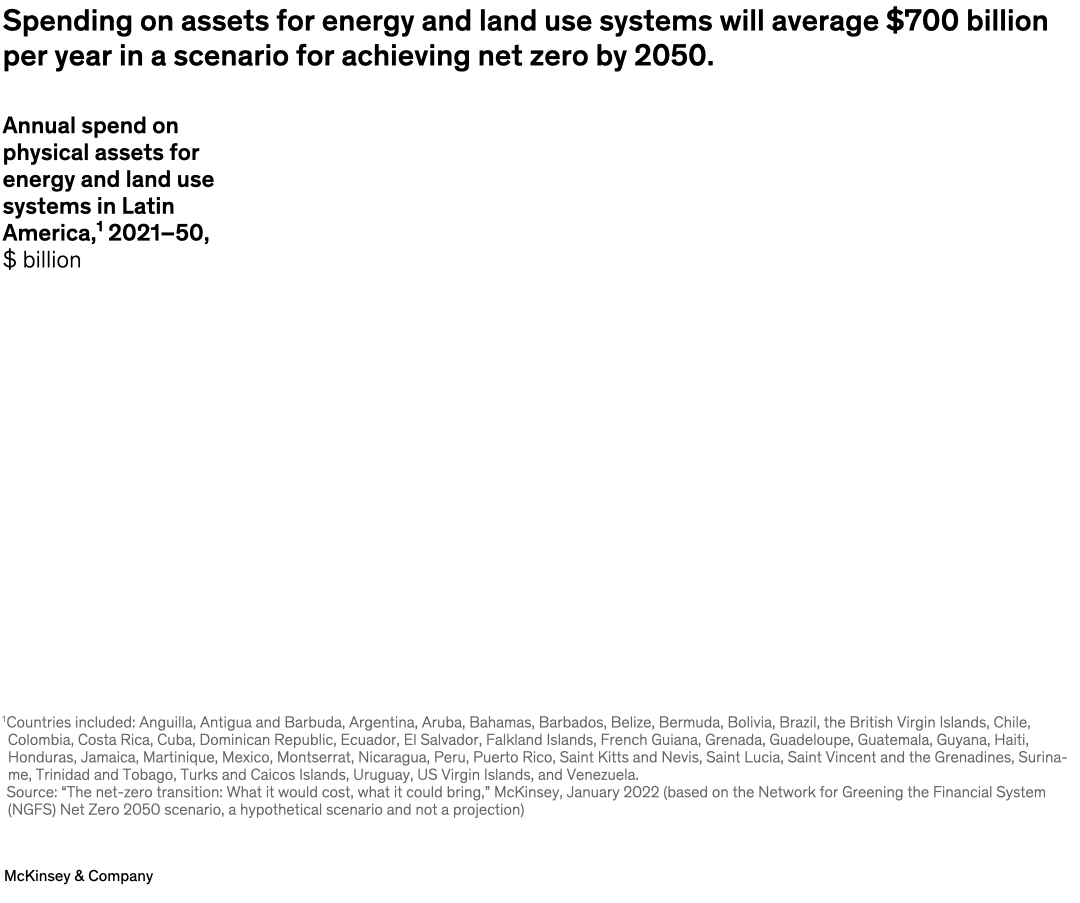The net-zero transition has picked up steam in Latin America, find senior partners Xavier Costantini and Elias Goraieb and colleagues. Although the region’s financial institutions have generally been slower than those elsewhere to integrate sustainability into strategic agendas, there has been a recent surge in capital flows. According to our research, achieving net zero by 2050 will push Latin America’s total spending on assets related to the physical transition to 9.4 percent of regional GDP, or about $20 trillion, with spending on physical assets rising by about $700 billion a year.

Image description:
In a scenario for reaching net-zero emissions by 2050, a square pie chart shows an estimated $700 billion in total annual spending on physical assets for energy and land use systems in Latin America between 2021 and 2050. The chart is divided into 2 columns, the left side showing current spending and the right side indicating new spending, in billions of dollars. The left column is broken down into 2 sections, the top representing $300 billion of continued spending on high-emissions assets and the bottom representing continued spending of $100 billion on low-emissions assets and infrastructure enablement. The right column shows new spending of $300 billion on low-emissions assets and infrastructure enablement.
Footnote 1: Latin America includes Anguilla, Antigua and Barbuda, Argentina, Aruba, Bahamas, Barbados, Belize, Bermuda, Bolivia, Brazil, the British Virgin Islands, Chile, Colombia, Costa Rica, Cuba, Dominican Republic, Ecuador, El Salvador, Falkland Islands, French Guiana, Grenada, Guadeloupe, Guatemala, Guyana, Haiti, Honduras, Jamaica, Martinique, Mexico, Montserrat, Nicaragua, Peru, Puerto Rico, Saint Kitts and Nevis, Saint Lucia, Saint Vincent and the Grenadines, Suriname, Trinidad and Tobago, Turks and Caicos Islands, Uruguay, US Virgin Islands, and Venezuela.
Source: “The net-zero transition: What it would cost, what it could bring,” McKinsey, Jan 2022 (based on the Network for Greening the Financial System Net Zero 2050 scenario, a hypothetical scenario and not a projection).
End of image description.
To read the report, see “Are Latin American financial institutions ready for sustainability?,” August 9, 2023.